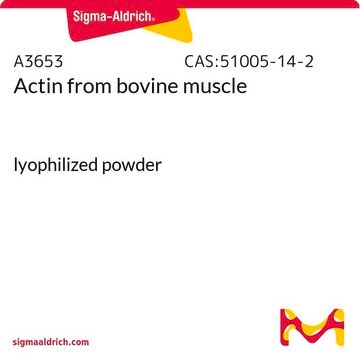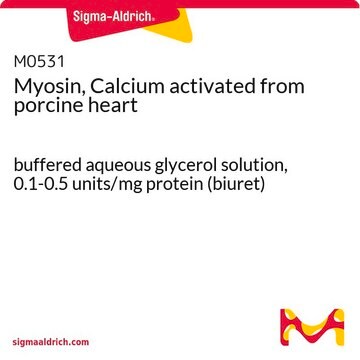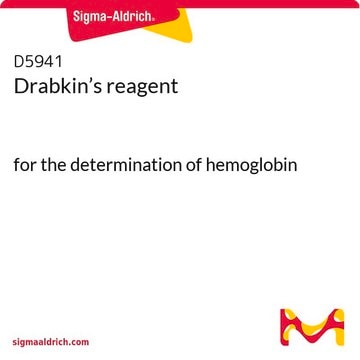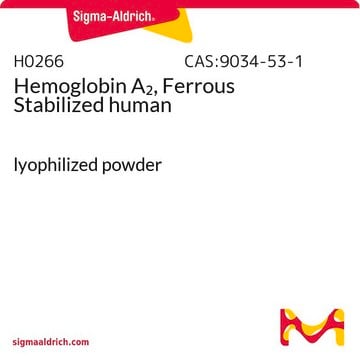Kluczowe dokumenty
H4632
Hemoglobin equine
lyophilized powder
Synonim(y):
Hb
Wybierz wielkość
3560,00 zł
Wybierz wielkość
About This Item
3560,00 zł
Polecane produkty
pochodzenie biologiczne
horse
Poziom jakości
Formularz
lyophilized powder
metody
protein quantification: suitable
rozpuszczalność
H2O: soluble 10 mg/mL
temp. przechowywania
2-8°C
informacje o genach
horse ... HBA(100036557) , HBB(100054109)
Opis ogólny
Zastosowanie
- to test solid-film sampling methodology in Fourier transform infrared spectroscopy (FT-IR) for protein secondary structure determination[4]
- in capillary reversed-phase liquid chromatography-tandem mass spectrometry (LC/MS/MS) post enzymatic digestion[5]
- for quantification of hemoglobin content from the planktonic crustacean, Daphnia magna[6]
Działania biochem./fizjol.
Przestroga
Zastosowanie
Kod klasy składowania
11 - Combustible Solids
Klasa zagrożenia wodnego (WGK)
WGK 3
Temperatura zapłonu (°F)
Not applicable
Temperatura zapłonu (°C)
Not applicable
Środki ochrony indywidualnej
Eyeshields, Gloves, type N95 (US)
Wybierz jedną z najnowszych wersji:
Certyfikaty analizy (CoA)
Nie widzisz odpowiedniej wersji?
Jeśli potrzebujesz konkretnej wersji, możesz wyszukać konkretny certyfikat według numeru partii lub serii.
Masz już ten produkt?
Dokumenty związane z niedawno zakupionymi produktami zostały zamieszczone w Bibliotece dokumentów.
Klienci oglądali również te produkty
Active Filters
Nasz zespół naukowców ma doświadczenie we wszystkich obszarach badań, w tym w naukach przyrodniczych, materiałoznawstwie, syntezie chemicznej, chromatografii, analityce i wielu innych dziedzinach.
Skontaktuj się z zespołem ds. pomocy technicznej













